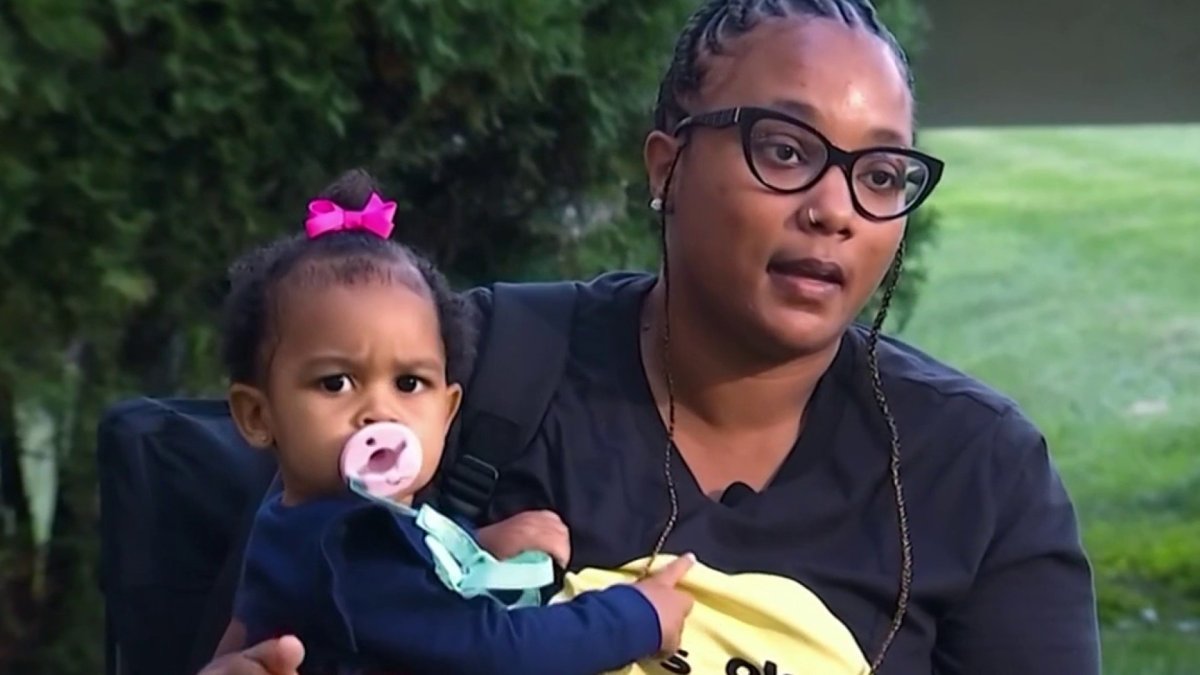
New technology could protect children from the harmful effects of tiny batteries found in common everyday devices like remotes and toys.
When Tanae Hall’s 13-month-old daughter, Denym, got sick, she went from one hospital to the next. Denym was vomiting, coughing and her voice was getting hoarse.
“It was like she was just getting worse by the day,” Hall said.
Denym endured a litany of tests over three days, but doctors found nothing wrong.
We're making it easier for you to find stories that matter with our new newsletter — The 4Front. Sign up here and get news that is important for you to your inbox.
“They did everything but the X-ray,” Hall said.
Four days after Denym’s symptoms began, an X-ray was finally ordered by her pediatrician.
“They thought they it was a nickel,” Hall said.
Local
Washington, D.C., Maryland and Virginia local news, events and information
Denym was rushed to Children’s National Hospital, where doctors confirmed it was a button battery.
Denym underwent emergency surgery to remove the battery, but the damage was already done.
“It really is heartbreaking. In fact, I took the battery out of Denym’s esophagus,” Dr. Anthony Sandler said.
Sandler says he surgically removes button batteries from children two or three times every month.
While many survive with little to no problems, others, like Denym, aren’t as lucky.
“It's really tough to go tell the family, you know, that there's a big burn in the esophagus, and I'm not exactly sure what's going to happen,” Sandler said.
According to Poison Control, when a child swallows a button battery, the tissue in the esophagus creates a current, causing an alkaline burn similar to ingesting Drano. In a worst-case scenario, the battery can erode into a blood vessel.
“And if that’s the case, it’s absolutely life-threatening,” Sandler said.
While Denym is recovering at home in Hyattsville, Maryland, scientists in Fairfield, Connecticut, are developing ChildLok -- button battery technology designed to deactivate batteries after they’ve been accidentally ingested by a child.
“The idea is that it’s transformed into an inert object, like you ingested a coin,” said Melisa Fensterstock of Landsdowne Labs. “At least it buys you more time, because right now, when people present at the ER, unless they’re flagged as an emergency, they could be sitting there for hours.”
Battery manufacturers are working to prevent accidental ingestions.
Duracell added a bitter coating to some of its coin cell batteries to discourage children from putting them in their mouths. But if accidentally ingested, the battery could still be toxic.
“It's all preventable,” Sandler said. “You know, I'm not sure there's a complete solution yet. I'm glad people are working on solutions.”
Sandler is sure about early diagnosis -- making sure parents know the warning signs and request an X-ray if their child can’t keep food down, sounds hoarse and is drooling excessively.
The battery burned a hole into Denym’s trachea. She has a feeding tube and will learn this week whether she’ll need more surgery. Her mom says she has no idea where the battery came from, but she does know just how close she came to losing her baby.
“I just think about, if I would have waited longer, my child probably would not be here,” she said. “My child wouldn’t be here.”
According to Poison Control, 3,500 people swallow button batteries each year. However, the Global Injury Research Collaborative found these injuries are infrequently reported and the number could be as high a 35,000.